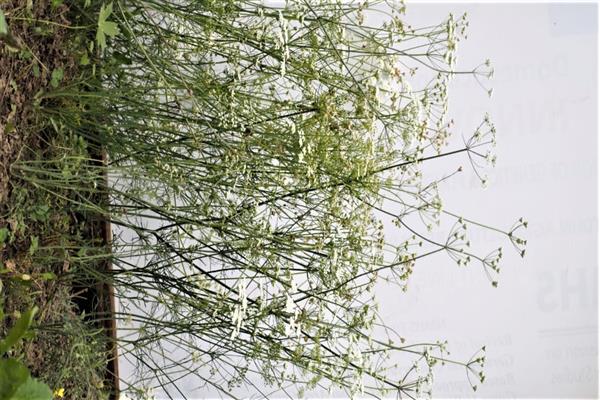Kashmir Magazine By : Kashmir Magazine | Srinagar, Publish Date: Tuesday, November 15, 2022 10:59:53 AM | Updated Date : Tuesday, November 15, 2022 10:59:53 AM

Black Cumin (Kala Zeera) of Gurez valley, growing mostly in the wild, is the most fragrant cumin in the world. The unique herbs that the Gurez valley is bestowed with, have already elevated its position further up, particularly as an important black cumin-growing region. Gurez black cumin is known for its aroma and herbal values throughout the world.
The pyramid shaped beautiful Habba Khatoon peak of Gurez is considered as the hub of Black Cumin, which mostly grows in the wild on the mountain peaks of Gurez, especially on the beautiful Habba Khatoon peak.
But the early and untimely harvesting of black cumin in the forests and mountain peaks has threatened its very existence in the area. The reason is not difficult to guess. The cost it fetches is impressive, going as high as Rs 9000 per kg in the local market.
Black cumin has multi-dimensional values. Medicinal use of black cumin seeds in various traditional herbal systems is known for a wide range of ailments which include several disorders, pain such as chronic headache and back pain, diabetes, paralysis, infection, inflammation, hypertension, and digestive tract-related problems.
Economic experts are of the firm opinion that during pandemic times, especially during the harsh waves of Covid 19, products like cumin and its diverse forms held their fort strong and did good business. And it is in this context that the early harvesting of the black cumin of Gurez needs attention.
The SKUAST scientists are now collecting black cumin corms from all traditional villages of Gurez and evaluating them in Germplasm bank and doing molecular studies. They are doing its DNA and nutritional analysis at Wadoora, a village in Sopore in the Zainageer Block in Baramulla district of Jammu & Kashmir, to get promising black cumin varieties.
The scientists are also trying to grow the black cumin in the wild on traditional agricultural farms in the Gurez area. Besides, some farmers have been doing intercropping of black cumin and saffron on a demonstration basis at 20 different places in south Kashmir’s Pulwama district including Ladhoo, Dusso and Shaar Shali.
What is good news is the villagers are happy with the flowering of the same variety. “We are also holding awareness campaigns with the administration to save the existence of black cumin, and the masses are being given the necessary knowledge. The awareness campaigns are bearing good results,” the SKUAST scientists said and added, “They are starting to take shape as the first crop under demonstration is showing promising growth”.
Bilal Ahmad, Assistant Professor at Sher-e-Kashmir University of Agricultural Sciences and Technology (SKAUST), Srinagar who is also in-charge of research centre established by the University in Izmarg village in Gurez said the valley which was once home to organic Black Cumin has witnessed drastic reduction as people have been prematurely harvesting it. He said to overcome the situation the experts are trying their best to revive this heritage crop.
“The SKAUST-Kashmir has started awareness missions across the valley through which knowledge about the good production of the crop is being imparted to common masses. People are being educated that the crop should be harvested at full maturity stage”, Bilal said.
To domesticate this Black Cumin, Bilal said the tubers of the crop were collected from the traditional villages of Gurez and germ plasma bank was established in collaboration with National mission on Himalayan studies in the station to analyze it's nutrition profiling and desirable characteristics following which some lines were chosen and were distributed to farmers.
The authorities in order to ensure domestication of the crop have identified three villages so far where thirty trials were conducted. “Our trials yielded good results and farmers were satisfied with this initiative”, the official said.
He said the authorities are mulling to domesticate the Black Cumin crop in more villages this year being the heritage crop of Gurez valley. “This is aimed to strengthen the socio-economic conditions of the farmers as there is huge demand for the crop in the market”, he also added.
Though the marketing channels for this crop are limited, SKAUST-Kashmir is considering exporting the crop in international markets so that farmers will get maximum benefit.